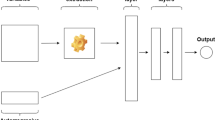Abstract
A gas-lift well sometimes suffers from slugging. As slugs reduce production volumes and cause other issues on the surface, we would like to mitigate or avoid them. The production choke and gas injection choke are two points at which the operator may influence the slug. For this to work, the operator must know that a slug is going to occur in advance so that avoidance actions can be implemented. We find that a slug can be forecast successfully five hours in advance given typical field instrumentation of the well. This is based on an LSTM machine learning approach given historical data only.
Access this chapter
Tax calculation will be finalised at checkout
Purchases are for personal use only
Similar content being viewed by others
References
Jepsen, K., et al.: Emulation and control of slugging flows in a gas-lifted offshore oil production well through a lab-sized facility. In: IEEE Multi-Conference on Systems and Control (2013)
Bangert, P.: Optimization for Industrial Problems. Springer, Cham (2012)
Goodfellow, I., Bengio, Y., Courville, A.: Deep Learning. MIT Press, Cambridge (2016)
Hochreiter, S., Schmidhuber, J.: Long short-term memory. Neural Comput. 9, 1735–1780 (1997)
Gers, F.: Long Short-Term Memory in Recurrent Neural Networks. Ph.D. thesis at EPFL in Lausanne (2001)
Graves, A.: Generating Sequences With Recurrent Neural Networks (2014). arXiv:1308.0850
Yu, Y., Si, X., Hu, C., Zhang, J.: A review of recurrent neural networks: LSTM cells and network architectures. Neural Comput. 31, 1235–1270 (2019)
Greff, K., Srivastava, R.K., Koutnik, J., Steunebrink, B.R., Schmidhuber, J.: LSTM: a search space odyssey. In: IEEE Transactions on Neural Networks and Learning Systems (2016)
Guyon, I., Elisseeff, A.: An introduction to variable and feature selection. J. Mach. Learn. Res. 3, 1157–1182 (2003)
Author information
Authors and Affiliations
Corresponding author
Editor information
Editors and Affiliations
Rights and permissions
Copyright information
© 2021 The Author(s), under exclusive license to Springer Nature Singapore Pte Ltd.
About this paper
Cite this paper
Bangert, P. (2021). Forecasting Slugging Using LSTM. In: Lin, J. (eds) Proceedings of the International Petroleum and Petrochemical Technology Conference 2020. IPPTC 2020. Springer, Singapore. https://doi.org/10.1007/978-981-16-1123-0_56
Download citation
DOI: https://doi.org/10.1007/978-981-16-1123-0_56
Published:
Publisher Name: Springer, Singapore
Print ISBN: 978-981-16-1122-3
Online ISBN: 978-981-16-1123-0
eBook Packages: EnergyEnergy (R0)




